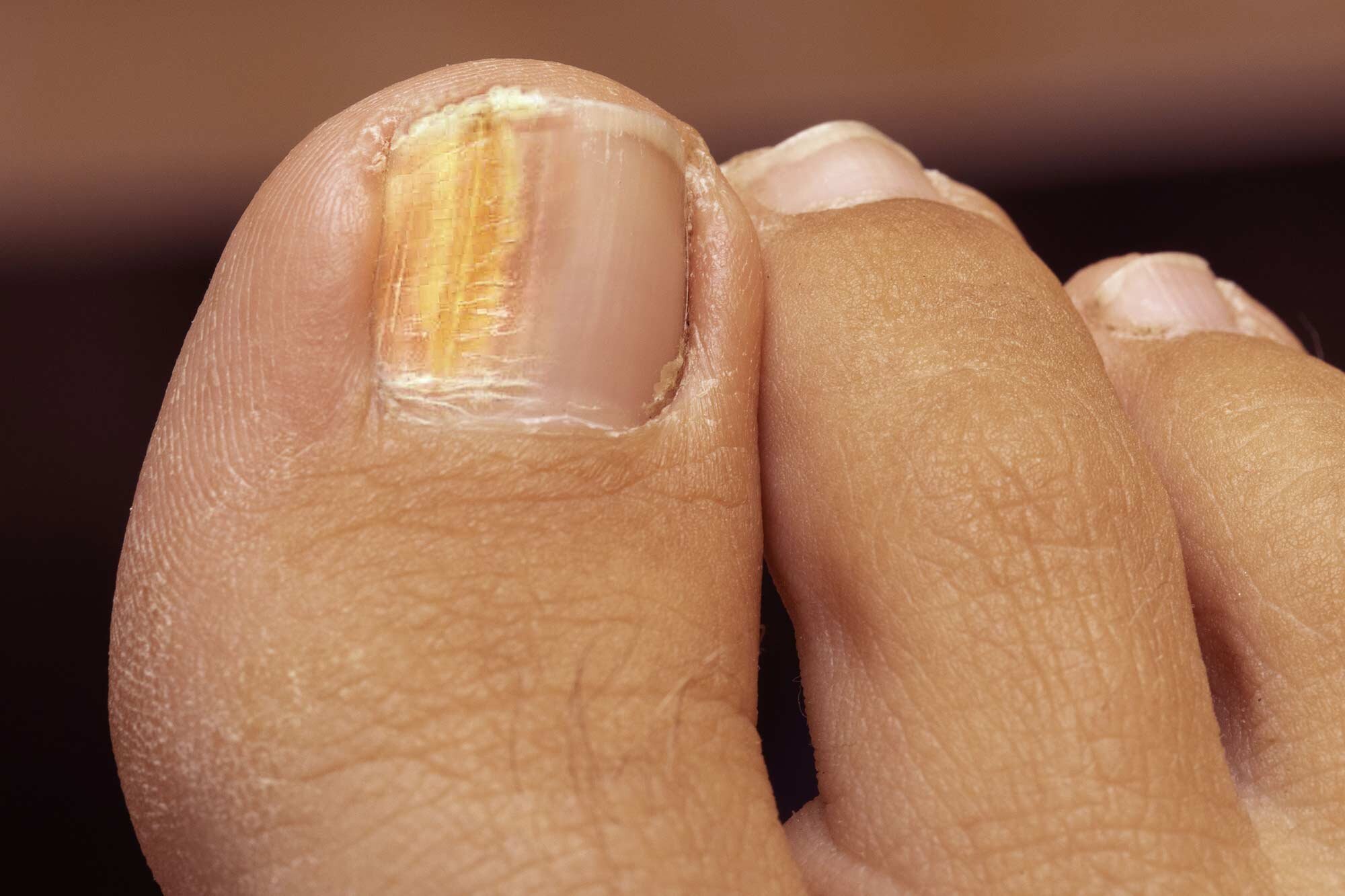
Nail disease
Nail diseases are conditions that affect the nails of the fingers and toes. Nail diseases can be caused by a variety of factors, including infections, injuries, and underlying medical conditions. Some common types of nail diseases include:
Onychomycosis: a fungal infection of the nails that causes thickened, discolored, or brittle nails
Onycholysis: separation of the nail from the nail bed, which can be caused by injury, infection, or underlying medical conditions
Paronychia: an infection of the skin around the nail that can cause redness, swelling, and pain
Psoriasis: a chronic skin condition that can cause the nails to become thickened, discolored, or pitted
Trauma: injury to the nails, such as bruising or tearing, can cause changes in the appearance of the nails
Symptoms of nail diseases may vary depending on the specific condition and may include changes in the appearance of the nails, such as thickening, discoloration, or brittleness. Other symptoms may include redness, swelling, and pain around the nails, as well as an unpleasant odor.
Treatment for nail diseases may involve the use of over-the-counter or prescription medications, such as antifungal creams or ointments, or may involve more aggressive treatment, such as surgical removal of the affected nail. In some cases, a healthcare provider may recommend a combination of treatments to help manage the condition.
In addition to treatment, there are several steps you can take to help reduce your risk of developing nail diseases:
Keep your nails clean and trimmed
Avoid sharing nail clippers or other personal grooming items
Wear shoes or sandals in public showers, locker rooms, and pool areas to help prevent the spread of infection
Wear breathable, moisture-wicking socks to help keep your feet dry
Avoid going barefoot in damp public areas, such as swimming pools or showers
Avoid biting your nails or picking at the skin around your nails
By following these precautions and seeking treatment as needed, you can help to manage nail diseases and reduce your risk of developing this type of condition. If you are concerned about nail diseases or have any other changes in your nails, it is important to see a healthcare provider for evaluation and treatment. Early detection and treatment can help to prevent the spread of infection and may improve the chances of a successful outcome.

